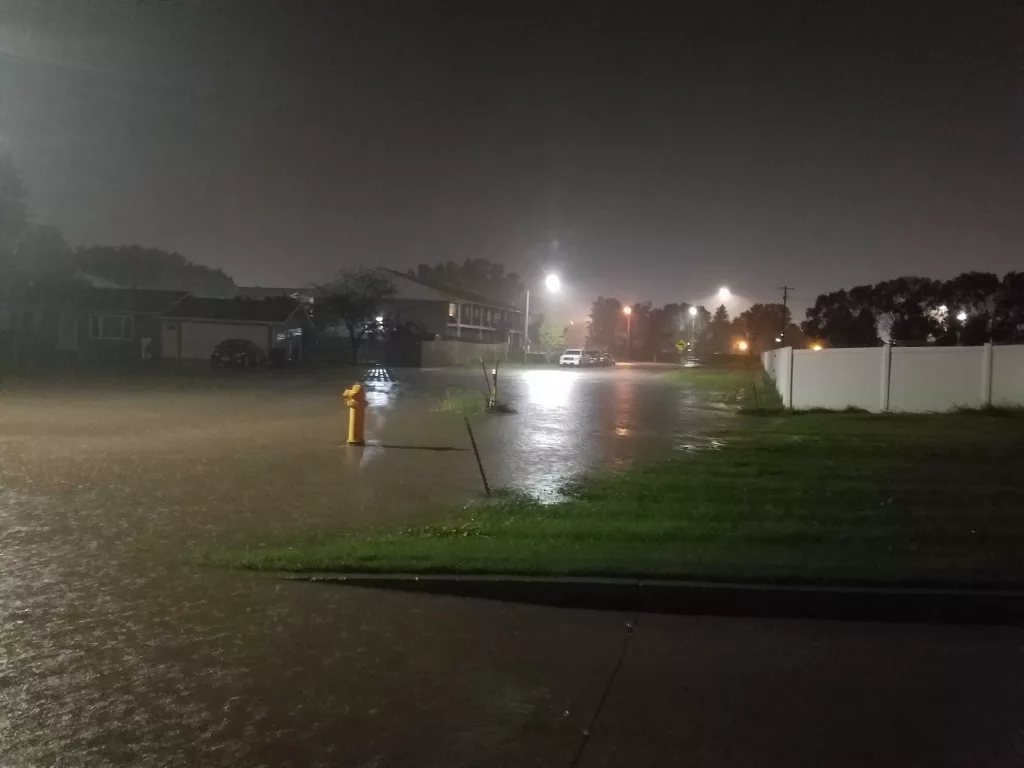One would initially think that flash flooding isn’t very likely when heavy rain is forecasted for drought-stricken areas and locations that have been warm/dry for some time. Since the ground is dry there must be plenty of room for water to absorb into. You may also think it will only flood when the ground is wet or saturated where additional moisture would just runoff since there isn’t any more room for additional moisture in the soil. Although both are true, flash floods often hit hardest in dry or drought locations when the rate of rainfall exceeds the rate at which the ground can absorb moisture.
But if it’s been dry wouldn’t there be plenty of room for the water to absorb into the soil and subsoil?
The answer is yes, however, what often happens when soil, especially hard clay soils like that of the Red River Valley dry out. They form a hard “impenetrable” crust that not even water can easily penetrate or absorb into until it loosens or weakens. The Ground/soils have a tendency to become hydrophobic oddly enough. This means it repels water instead of absorbing it.
This can happen when soil is exposed to hot weather and or little rainfall over some time. This can cause a waxy residue to build up on the surface. Sandy soil and dried potting mix are especially prone to becoming hydrophobic. I’m sure you have probably watered flowers that hadn’t been watered for a while and the container or pot just fills with water versus absorbing it into the dirt until the water sits atop the soil for a while. The same thing can happen on a larger scale. Once the top layer becomes rehydrated it absorbs water much quicker. But that first initial stage is when it is the most dangerous for heavy rains as seen in Bismarck just the other day where 3-6 inches of rain fell over an hour or two.
Flash floods are the most dangerous kind of floods combining the destructive power of a flood with incredible speed. They also occur when water fills normally dry streams or enough water accumulates for streams to overtop their banks. Flash floods can happen within minutes of heavy rainfall, limiting the time available to warn. Flash floods can occur when heavy rainfall exceeds the ground’s ability to absorb it. This can also happen when a thunderstorm stalls over an area producing heavy rain for a period of time. Steep, hilly, or mountainous terrain can cause rapid runoff and quick stream response, which can lead to flash floods. When natural environments are replaced with hard surfaces like streets, sidewalks, and buildings, water can’t get absorbed and quickly runs off often overpowering drainage systems. These floods can cause rapid rises in water levels, and flooding can occur miles away from where the rain fell. Flash floods can be dangerous and threaten life and property.
Meteorologist,
Justin Storm





